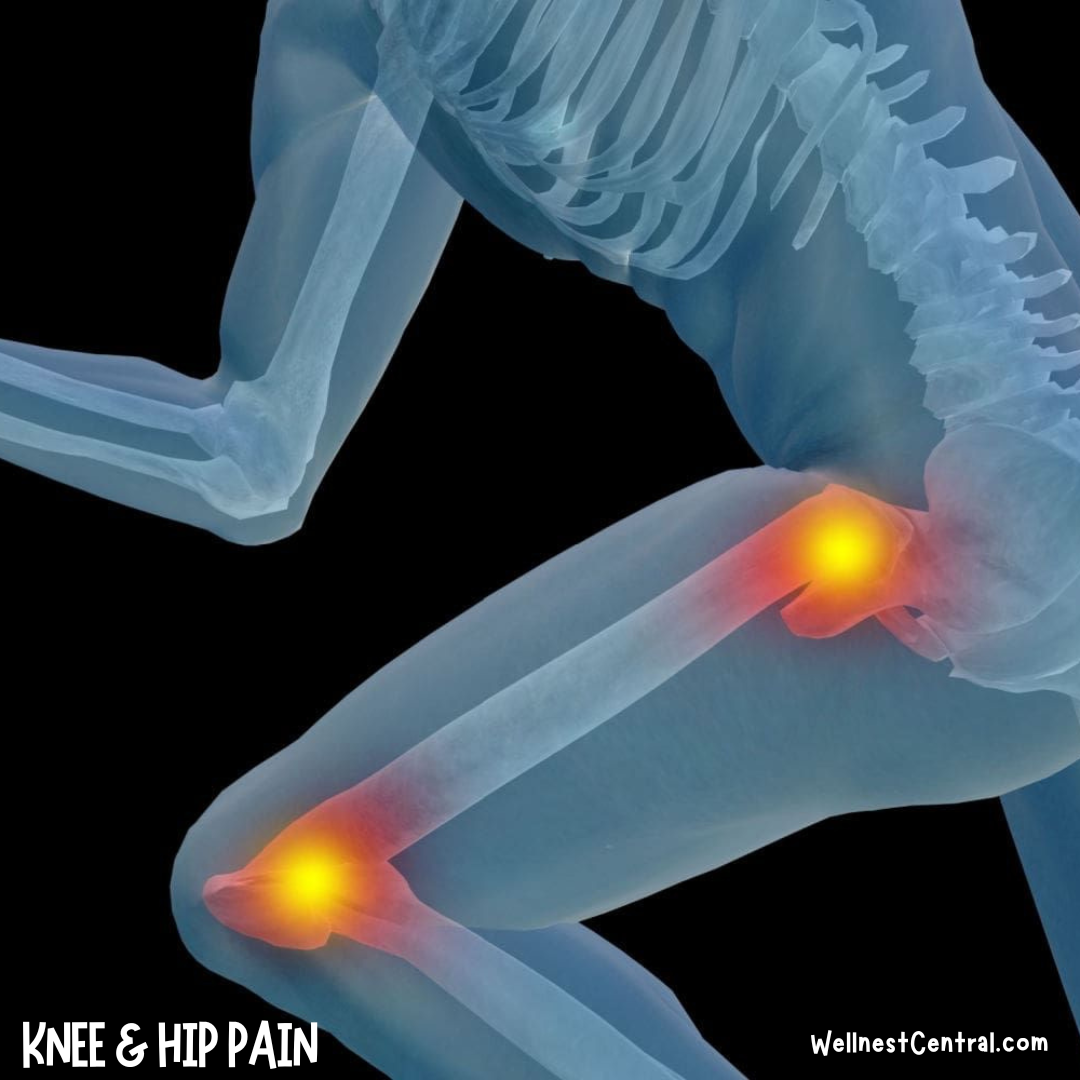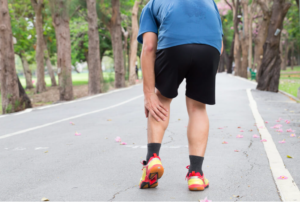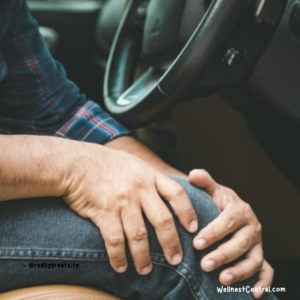Introduction
Can knee pain cause hip pain? If you’ve experienced discomfort in your knee that eventually radiates to your hip, you’re not alone. Knee pain can often be linked to hip discomfort, and understanding this connection is crucial for effective pain management. Since these joints share complex muscles and movement patterns, an issue with one can easily lead to pain in the other. By uncovering the root causes and exploring the right treatments, you can find relief, improve your joint health, and enhance your overall mobility.
In this article, we’ll explore how knee pain can cause hip pain, common causes, symptoms to watch out for, and solutions to help you find relief.
Dealing with knee pain? Find out more here: Understanding Knee Pain ICD-10 Codes: A Comprehensive Guide to Accurate Diagnosis
Understanding the Knee-Hip Connection
How Are the Knee and Hip Connected?
The knee and hip are parts of a complex system of bones, muscles, ligaments, and tendons that work together to support your body’s movement and balance. The hip is a ball-and-socket joint, and the knee is a hinge joint, both playing a crucial role in your ability to walk, run, and stay active. Although these joints are separate, they share a biomechanical relationship.
Muscles such as the quadriceps, hamstrings, glutes, and the iliotibial (IT) band connect these two joints, allowing them to function in tandem. If you injure or overuse one of these areas, the pain and altered movement can lead to problems in the other. This phenomenon is known as “referred pain,” where discomfort in one part of the body affects another.
Common Causes of Knee Pain Leading to Hip Pain
What Causes Knee Pain to Affect the Hip?
Several conditions and injuries can cause knee pain to spread to the hip, resulting in discomfort and sometimes restricted mobility:
1. Osteoarthritis
Osteoarthritis is a degenerative joint disease that often starts in the knee but can also affect the hip. When cartilage in the knee wears away, it causes stiffness and pain, leading you to alter how you walk or move. This altered gait can put added strain on the hip joint, causing pain and stiffness.
2. Injury or Overuse
Sports injuries, falls, or even routine overuse can lead to knee issues like ACL tears, meniscus damage, and tendon injuries. These conditions change the way you bear weight, forcing your hip to compensate for the weakened knee. Over time, this compensation can lead to hip pain and discomfort.
3. Muscle Imbalance and Gait Issues
Muscle imbalances, such as weak glutes or tight hamstrings, can affect how both the knee and hip function. Gait issues (improper walking patterns) like overpronation can cause undue stress on the knee, which then travels to the hip. Even minor imbalances can lead to significant discomfort over time.
4. IT Band Syndrome and Bursitis
The iliotibial band, which runs from the hip to the knee, can become tight or inflamed due to overuse or muscle weakness. IT band syndrome often causes pain on the outer side of the knee and can lead to secondary hip pain. Similarly, bursitis—an inflammation of the small sacs (bursae) cushioning your joints—can affect both the knee and hip.
Signs and Symptoms to Watch For
How to Recognize Knee Pain Spreading to Hip Pain?
Identifying the connection between knee and hip pain can be tricky. Here are some symptoms to keep an eye on:
- Pain that Travels: If knee pain is followed by pain in the hip area, particularly during or after physical activity, this could indicate a link.
- Stiffness and Limited Mobility: Difficulty in moving either joint comfortably or stiffness in both the knee and hip.
- Compensatory Movements: Favoring one side of your body, limping, or feeling off-balance.
- Pain Type and Duration: Hip pain may feel dull, achy, or sharp depending on the cause and may occur consistently or only during certain activities.
It’s important to pay attention to how the pain behaves when you rest, move, or change positions, as this information can be critical for proper diagnosis.
Diagnosis and Treatment Options
Getting the Right Diagnosis and Treatment
Correctly diagnosing the underlying cause of knee and hip pain is essential for effective treatment. Healthcare providers often use a combination of:
- Physical Exams: To assess pain location, mobility, and joint stability.
- Imaging Tests: MRI, X-rays, and ultrasounds can identify structural issues like joint damage, inflammation, or tears.
- Gait Analysis: Studying walking patterns to pinpoint potential movement issues affecting both the knee and hip.
Once diagnosed, treatment options may include:
1. Rest, Ice, and Medication
For immediate relief, rest and ice can help reduce inflammation and pain. Over-the-counter pain medications like ibuprofen can alleviate discomfort in both the knee and hip.
2. Physical Therapy
A physical therapist can develop a personalized plan that includes exercises to stretch and strengthen muscles around both joints. For example, working on quadriceps and hamstring strength can provide better knee support, while glute and hip strengthening can stabilize the hip.
3. Lifestyle Adjustments
Managing body weight can significantly reduce stress on both the knee and hip joints. Additionally, wearing proper footwear with good arch support can prevent gait issues that contribute to knee and hip pain.
4. Advanced Treatments
In severe cases, doctors may recommend bracing to stabilize joints, injections like corticosteroids to manage pain, or surgical options to repair damaged tissue.
Exercises and Prevention Tips
Exercises to Manage and Prevent Knee and Hip Pain
Physical activity is a key factor in maintaining joint health and preventing pain. Below are some exercises to help:
Stretching
- Hamstring Stretch: Sit on the floor with one leg extended. Reach for your toes to stretch the back of the thigh.
- Hip Flexor Stretch: In a kneeling lunge, push the hips forward gently to stretch the hip flexor muscles.
Strengthening
- Glute Bridges: Lying on your back with knees bent, lift your hips to strengthen glutes and hamstrings.
- Straight Leg Raises: Lying flat on your back, lift one leg at a time to engage the quadriceps.
Balance and Posture Work
Engaging in activities like yoga, Pilates, and tai chi can help improve posture, balance, and core strength, reducing stress on both the knee and hip.
Prevention Tips: Warm up before exercise, practice good posture, and gradually increase activity levels to avoid overuse injuries.
Real-Life Testimonials
How Others Have Found Relief
Emily, a 42-year-old avid runner, began experiencing knee pain that eventually spread to her hip. By visiting a physical therapist, she learned that her weak glute muscles were the source of the problem. Through strengthening exercises and proper stretching, she regained her mobility and alleviated the pain.
James, a senior dealing with osteoarthritis, found that low-impact exercises like swimming and cycling helped maintain his joint health without aggravating his knee and hip pain.
When to Seek Professional Help
Knowing When It’s Time to Consult a Doctor
If your knee or hip pain is persistent, causes swelling, or affects your ability to perform daily activities, it’s time to seek professional help. Early diagnosis and treatment can prevent the worsening of symptoms and improve the outcome of joint health.
Conclusion
Understanding and Addressing the Knee-Hip Pain Connection
Knee and hip pain are often interlinked, and understanding this relationship can be the key to finding relief. By recognizing the symptoms, seeking the right treatment, and practicing preventive care, you can regain control of your movement and live a pain-free life. Remember, a proactive approach to joint health makes a significant difference. Don’t let knee and hip pain keep you from staying active—take charge and prioritize your well-being today.



